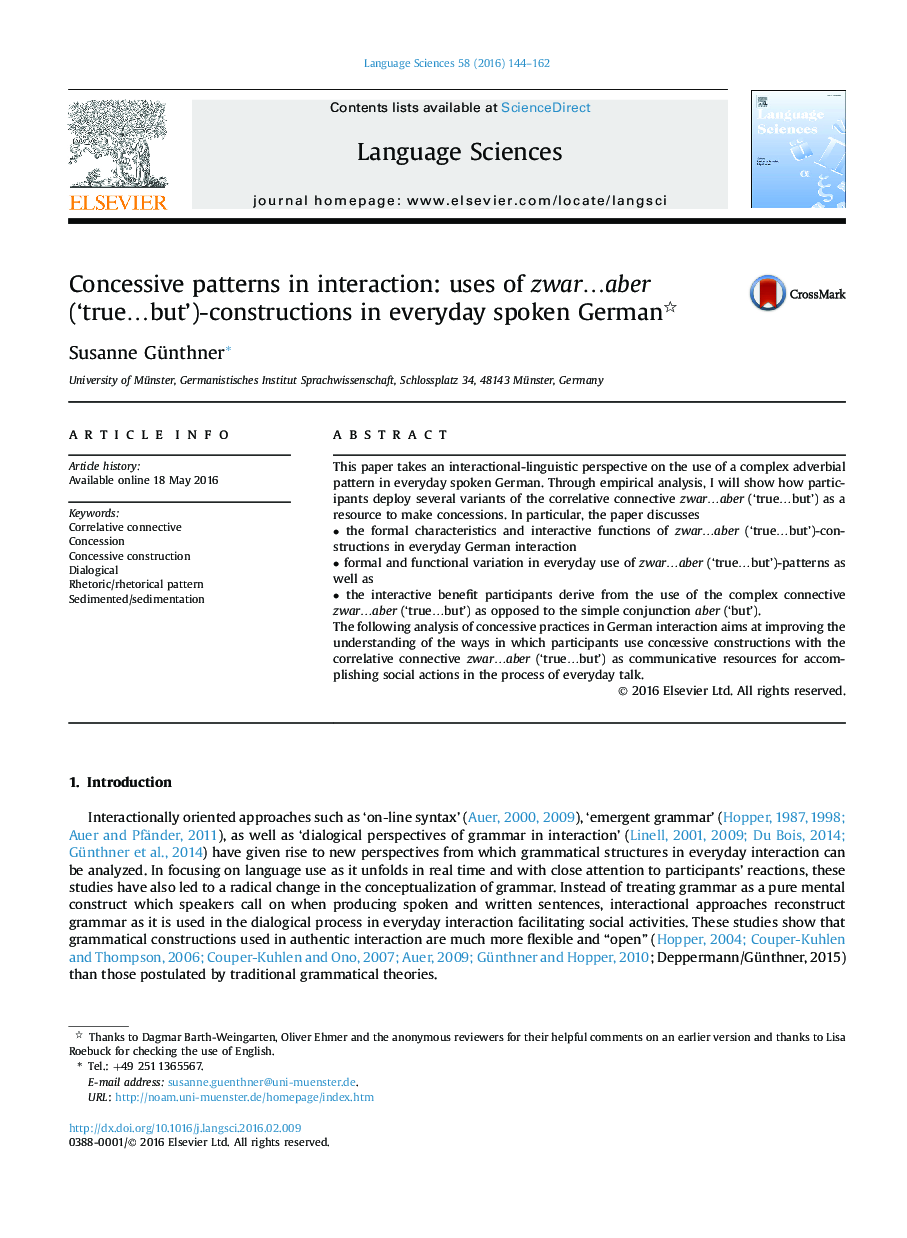| کد مقاله | کد نشریه | سال انتشار | مقاله انگلیسی | نسخه تمام متن |
|---|---|---|---|---|
| 5124584 | 1488145 | 2016 | 19 صفحه PDF | دانلود رایگان |

- An interactional-linguistic perspective on the use of concessive practices (i.e. zwarâ¦aber-constructions) is proposed.
- The division of the two units not only delays speaker's argument, but also helps keep the floor for the upcoming counter-claim.
- The concessive zwarâ¦aber-construction functions as a sedimented practice to deal with opposing perspectives.
- In using zwarâ¦aber-constructions, speakers achieve alignment and intersubjectivity.
- Stand-alone zwarâ¦-utterances are adapted to local interactional needs which arise out of the unfolding of interaction.
This paper takes an interactional-linguistic perspective on the use of a complex adverbial pattern in everyday spoken German. Through empirical analysis, I will show how participants deploy several variants of the correlative connective zwarâ¦aber ('trueâ¦but') as a resource to make concessions. In particular, the paper discusses
- the formal characteristics and interactive functions of zwarâ¦aber ('trueâ¦but')-constructions in everyday German interaction
- formal and functional variation in everyday use of zwarâ¦aber ('trueâ¦but')-patterns as well as
- the interactive benefit participants derive from the use of the complex connective zwarâ¦aber ('trueâ¦but') as opposed to the simple conjunction aber ('but').The following analysis of concessive practices in German interaction aims at improving the understanding of the ways in which participants use concessive constructions with the correlative connective zwarâ¦aber ('trueâ¦but') as communicative resources for accomplishing social actions in the process of everyday talk.
Journal: Language Sciences - Volume 58, November 2016, Pages 144-162